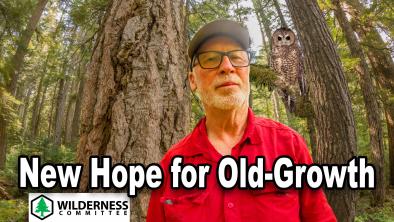The Search for Spotted Owls and Private Power in the Lower Fraser

I was recently contracted by the Wilderness Committee to take their ancient beast of a truck out into the field to investigate logging and IPP (Run of River Hydro) developments in areas managed for the protection of the most endangered animal in Canada, the spotted owl. The GIS specialist at the Wilderness Committee, Geoff Senichenko made me gorgeous maps showing all the planned clearcuts and IPP developments near spotted owl sites. Biologist Andy Miller had maps showing hundreds of historic spotted owl detection sites......and the 6 remaining owl sites, yes only 6 spotted owl sites remain in BC!
Then I donned my foul weather gear and headed out into the Wilderness, snow chains and satellite phone at the ready. I spent 6 days driving the remote logging roads in the Chehalis River Valley near Mission, the Anderson River Valley (Utzlius Creek in particular) near Yale, and Sowaqua Creek near Hope). All these sites have been home to spotted owls until recently; but clearcut logging forced the owls out. Many of the landscapes in southwestern BC have been so ravaged by clearcutting that it is amazing that any spotted owls survive at all.

I am happy to report that there was no obvious industrial activity at any of the planned IPP sites and little logging activity either. It was sad visiting all these former spotted owl sites, knowing that so many spotted owls have disappeared in only a few short years, and I am hoping that the BC government will protect and restore more of their habitat so that young owls bred in captivity can be safely released into the few bits of nice valley bottom old growth forest that remains.

A new BC government spotted owl habitat protection plan is scheduled to come into force sometime this winter. Between now and then there will be some sort of public consultation process. I am sure we will all be hearing from the Wilderness Committee on how we can participate to get the best deal possible for the owl and for the mystical old growth forests.
Martin Krykorka


